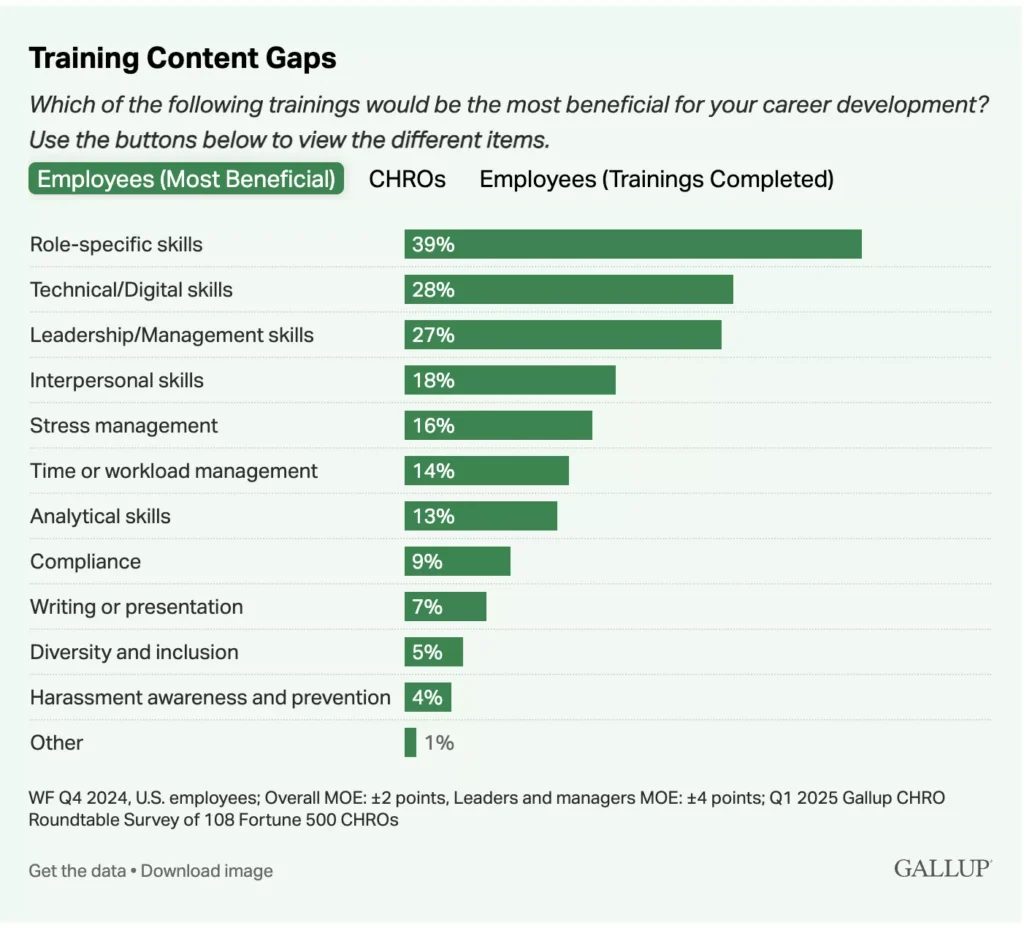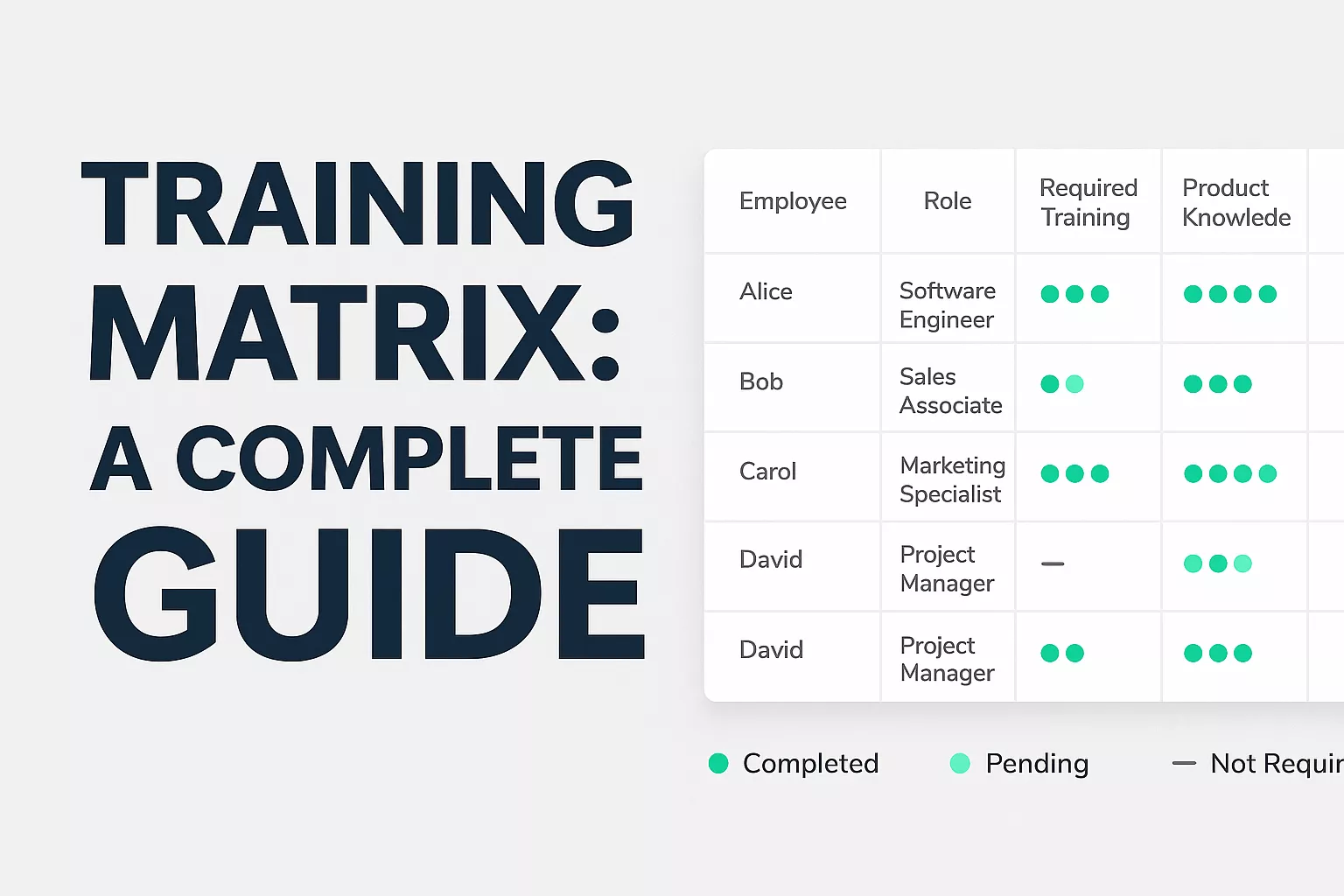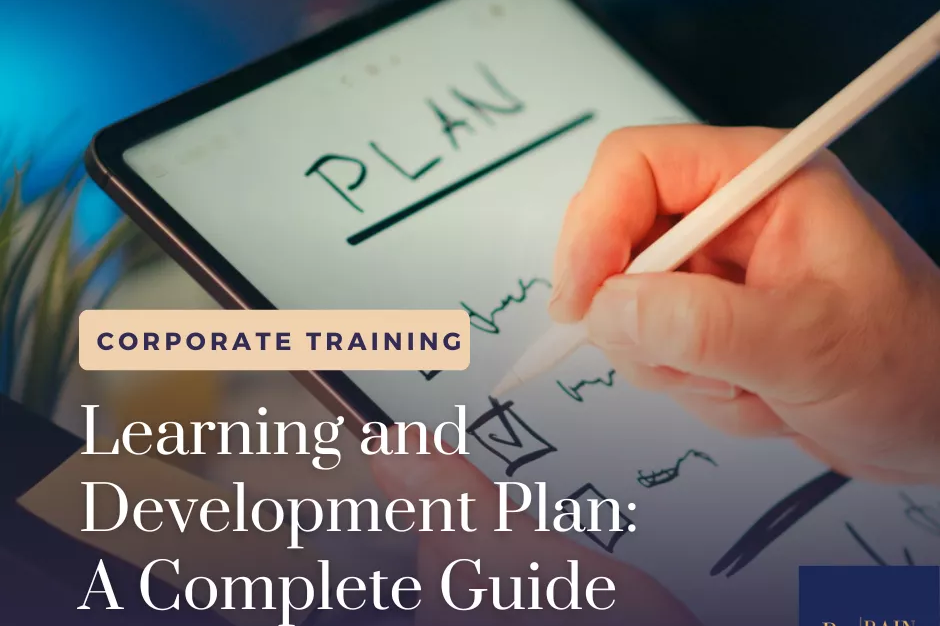by Venchito Tampon | Last Updated on July 23, 2025
Training programs are most effective when they match what employees actually need and expect. Learning more about employee expectations is not guesswork – it’s a strategic move to help L&D professionals and corporate training companies design training programs.
What Do Employees Expect from Training?
Here are the top training expectations of employees:
1. Clear Learning Outcomes
Employees want clarity. Before a training session begins, they want to understand what specific skills or knowledge they will gain, how the training will help them perform better or faster, and how it will align with their current job responsibilities.
When learning outcomes are vague, like “improve communication” or “develop leadership”, employees, especially those in intermediate to advanced roles, struggle to see the value of training. This disconnect reduces their actual engagement and limits their application during the training.
Clear learning outcomes align training content with workplace needs. L&D practitioners and trainers who initiate training with learning outcomes can set the right expectations, guide content, and help employees self-assess progress.
2. Relevant and Practical Content
Employees want training that is directly related to their work and personal growth. They expect content that reflects real scenarios they encounter in their day-to-day work, helps them solve job-related problems, and equips them with tools, strategies, and insights they can apply immediately.
Training that lacks relevance feels disconnected from day-to-day reality. Employees may sit throughout the program, but will not retain or apply what they’ve learned.
On the other hand, relevant content improves the transfer of learning, which means that employees are more likely to apply the skills in the workplace, leading to better job performance.
Training that is too abstract, purely theoretical, or generic loses value. Employees will start asking how the training will help them or whether it is just for mere compliance with the job.
3. Engaging Delivery Methods
Employees do not want to sit through long lectures. They want immersive learning experiences where they can contribute, interact, and apply. Their unspoken questions often include:
- “Will this be another passive session?”
- “Will I have the chance to speak, ask questions, or try something out?”
- “Is this going to feel like real learning or just information dumping?”
As a corporate trainer, I know firsthand that before training sessions, participants have a preconceived mindset about what the training will look like or how it will run.
Passive sessions lead to low participant engagement and retention. Studies show that most adults stop absorbing information effectively after 15 to 20 minutes of uninterrupted lecture. Without interaction, learners disengage—even if the content is highly useful.
Interactive training drives better outcomes for the participants and their organization. It builds stronger memory, improves participation, and makes it easier to apply new skills in real situations.
4. Practice and Feedback
Employees expect to apply what they learn during training and receive clear, concise, and direct feedback on one skill or task related to their job. Without practice, knowledge remains theoretical, and without feedback, learners don’t know what to improve.
Training should include live practice activities that reflect real tasks. This allows employees to test new skills in a safe setting. For instance, in a customer service training session, participants can respond to escalation messages using the company’s tone guide. These exercises make learning practical and job-relevant.
Practice and feedback loop sessions are mostly conducted for in-house training programs with direct trainers and facilitators hired by the company. They usually include multiple practice rounds, not just one. Learners should apply a skill, receive feedback, and try again—a feedback loop session that will improve retention and prepare them to perform confidently at work.
5. Respect for Time and Focus
Employees expect training to be efficient and well-timed. They do not want sessions to disrupt critical work or feel disconnected from their priorities. If training cuts into deadlines or runs too long, it becomes a source of stress instead of support.
A recent study conducted by Gallup shows that time away from job responsibilities is the number one barrier to learning and development for employees:
- 89% of CHROs cite time away from responsibilities as the biggest obstacle for their organization
- 37% of leaders and managers see it as their greatest barrier to supporting their employees’ development
- 41% of employees report it as their top obstacle

Schedule sessions during slower periods or outside peak operational hours to meet this training expectation. Break content into shorter modules that last 10 to 15 minutes, especially for online or hybrid formats—this is commonly referred to as “microlearning,” which allows employees to stay focused without overwhelming their schedules.
6. Career Progression and Recognition
Employees expect training to support their career growth. They want to see how learning and actual application connect to their professional advancement. To meet this expectation, trainers and L&D practitioners must link training programs to performance goals.
To meet this training expectation, clearly show which skills are needed for specific job roles and how corporate training will help them meet those requirements.
7. Support After the Session
Employees want to continue learning after the training sessions end. Without follow-up, new skills fade, learning becomes theoretical, and is rarely applied.
Having follow-up sessions or training check-ins will allow us to support participants’ ongoing skill development. Aids like summary materials, checklists, handouts, or any job aids will help reinforce key concepts.
L&D practitioners and corporate trainers should offer optional coaching sessions after the training program to clarify use cases or facilitate insights from participants who have applied their learning to their day-to-day work.
Explore Training That Meets Employee Expectations
If you’re looking to design training programs that meet employees’ expectations, you can check out Rainmakers, the top corporate training provider in the Philippines.
They develop, design, and deliver engaging, high-impact corporate training programs that align with your training objectives and business outcomes.
The Author
Venchito Tampon
Venchito Tampon is a Filipino motivational speaker, Business Consultant, Founder and Lead Corporate Trainer of Rainmakers Training Consultancy. He trained and spoken in over 250+ conventions, seminars, and workshops across the Philippines and internationally including Singapore, Slovakia, and Australia. He has worked with top corporations including SM Hypermarket, Shell, and National Bookstore.
He also founded SharpRocket, a digital marketing company, Blend N Sips, eCommerce for coffee supplies, and Hills & Valleys Cafe, a local cafe with available franchising.
He is a certified member of The Philippine Society for Talent Development (PSTD), the premier organization for Talent Development practitioners in the country.
An active Go Negosyo Mentor (of Mentor Me program) and a business strategist and consultant.
You may also like
Training Matrix: A Complete Guide
Training mix is a structured framework that helps HR and Learning and…
Learning and Development Plan: A Complete Guide
Learning and Development Plan (L&D plan) is a structured flow and framework…



